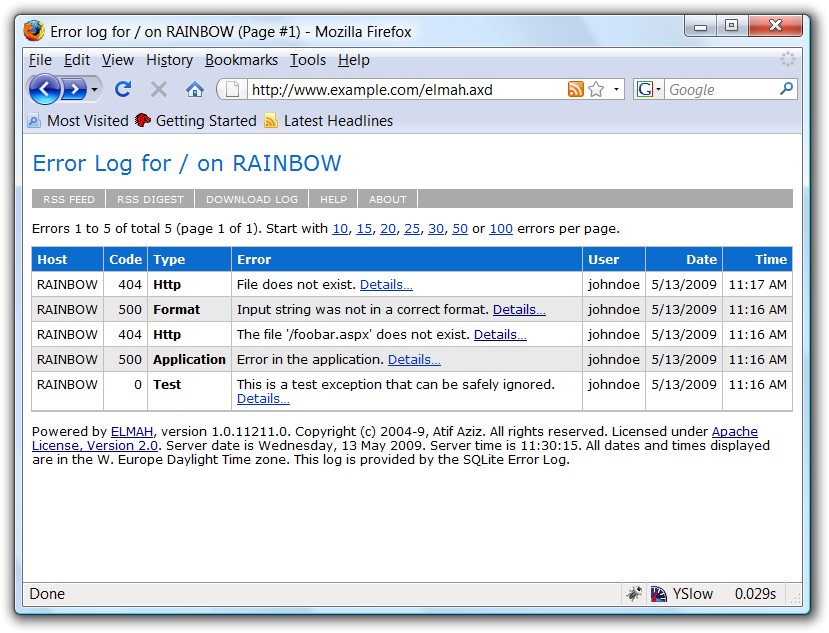Adding ELMAH to a Nancy Site
16 Apr 2013Description of ELMAH from the web site:
ELMAH (Error Logging Modules and Handlers) is an application-wide error logging facility that is completely pluggable. It can be dynamically added to a running ASP.NET web application, or even all ASP.NET web applications on a machine, without any need for re-compilation or re-deployment.
Once ELMAH has been dropped into a running web application and configured appropriately, you get the following facilities without changing a single line of your code:
- Logging of nearly all unhandled exceptions.
- A web page to remotely view the entire log of recoded exceptions.
- A web page to remotely view the full details of any one logged exception, including colored stack traces.
- In many cases, you can review the original yellow screen of death that ASP.NET generated for a given exception, even with
customErrorsmodeturned off. - An e-mail notification of each error at the time it occurs.
- An RSS feed of the last 15 errors from the log.
It’s, “The bee’s knees ”, in my opinion and thanks to the Nuget package, a breeze to install.
Open the package manager console in Visual Studio and type the following:
PM> Install-Package Nancy.Elmah
Open your Bootstrapper class and add ELMAH to the processing pipeline:
namespace Nancy.Elmah.Asp.Net.Example
{
public class Bootstrapper : DefaultNancyBootstrapper
{
protected override void ApplicationStartup(TinyIoc.TinyIoCContainer container,
Nancy.Bootstrapper.IPipelines pipelines)
{
Elmahlogging.Enable(pipelines, "elmah");
}
}
}
Next, open your Web.config. You can remove the
The ELMAH installer modifies the Web.config to configure ELMAH. It does not configure where the errors are stored. There are many options including SQL Server and Oracle. I personally like to use files. Here’s an example configuration.
<elmah>
<security allowRemoteAccess="true" />
<errorLog type="Elmah.XmlFileErrorLog, Elmah" logPath="~/App_Data/Elmah" />
</elmah>
I also enable remote access. It’s convenient but be aware there’s a security risk.
Open the ELMAH dashboard and navigate to http://yourwebsite/elmah
Here’s an example dashboard:

Finally, I discovered a minor bug in Nancy where some accept headers can raise exceptions. On my site it was generating several hundred log messages a day. There’s a bug logged and it will likely be fixed in a future version of Nancy. In the meantime, you can modify your ELMAH configuration to remove these exceptions. Here’s the final form of the ELMAH configuration.
<elmah>
<security allowRemoteAccess="true" />
<errorLog type="Elmah.XmlFileErrorLog, Elmah" logPath="~/App_Data/Elmah" />
<errorFilter>
<test>
<regex binding="Exception.Message" type="System.ArgumentException"
pattern="inputString not in correct Type/SubType format" />
</test>
</errorFilter>
</elmah>